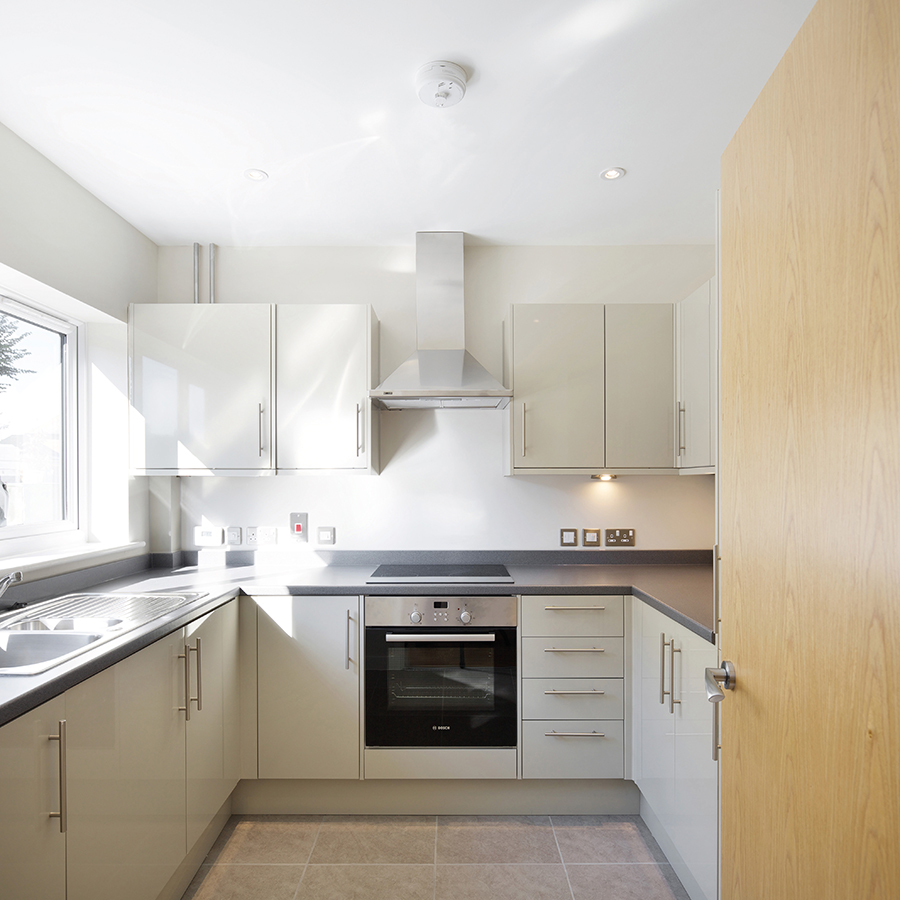Housing providers and owners in Scotland have less than two years to install or upgrade fire and CO alarms in all their properties, as alarm manufacturer Kidde Safety Europe explains.
Kidde Safety Europe
Following the Grenfell Tower fire, the Scottish Government brought forward its consultation on fire and smoke alarms, as well as CO alarms, in housing. The result is a major change to the ‘Tolerable Standard’ for all housing tenures, taking effect from February 2021. In essence, the minimum safety standards currently in place for private rented properties will be extended to all other tenures, including social housing, and owner-occupied homes.
Private rented housing in Scotland must already meet requirements based on the BS 5839-6 Code of Practice, ‘Category LD2’ level of protection, mirroring Scottish Building Regulations for new-builds, changes of use and extensions. This means a system of interconnected smoke and heat alarms, including smoke alarms in principal living rooms and heat alarms in kitchens, as well as smoke alarms in circulation areas on each storey. In addition, CO alarms will also be required in all homes with combustion appliances. The Scottish proposals consider that “it makes practical sense to combine installation programmes for … smoke alarms and carbon monoxide alarms together”.
Addressing audibility issues
More attention should be paid to the positioning of alarms for audibility, as well as early detection of fire or carbon monoxide – something that current standards and guidelines fail to address properly.
Combining smoke, heat and CO alarms can provide more coverage cost-effectively, ensuring that occupiers are awoken and alerted wherever they are in the property, whatever the risk.

For example, Kidde’s Smart Interconnect facility enables all its Firex smoke and heat alarms, and its hard-wired mains CO alarms, to operate as a comprehensive domestic system. Here, all the alarms sound when one is triggered, with different, distinct alarm sounder patterns for carbon monoxide or fire – an essential facility – supported by alternative display messages on the digital CO model. So, without the need for any other hardware, occupants are automatically alerted to the specific hazard enabling them to respond quickly and correctly.
First line of defence
The new Scottish measures herald a fresh, straightforward approach to fire and carbon monoxide safety, and recognise the key role of alarms as the first line of defence, providing critical early warning at low costs. They make occupants – and therefore also alerted fire and rescue services – aware of fires sooner and at an earlier stage in its development, reducing risk of injuries, deaths and property damage.
Kidde welcomes the new measures and calls for a similar, consistent approach to be applied throughout the UK. In particular, pressure is now on to upgrade fire regulations for all rented properties in England in line with the BS 5839-6 Code of Practice and to require CO alarms with all combustion appliances, not just solid fuel as at present.







